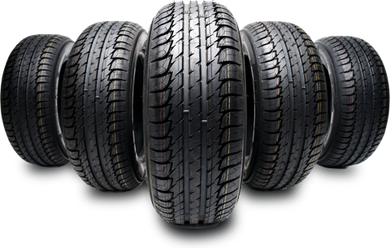Depend On Morris Tire and Alignment for Specialist Service and Treatment
Depend On Morris Tire and Alignment for Specialist Service and Treatment
Blog Article
Tire Solution: Recognizing Tire Stress Monitoring Equipments
Comprehending Tire Stress Monitoring Solutions (TPMS) is a vital element of keeping optimal automobile performance and security on the road. With advancements in automobile modern technology, TPMS has become a typical feature in modern cars, providing real-time details on tire pressure levels. Digging deeper into the complexities of TPMS, one can reveal the various components that comprise this system and the importance of each in guaranteeing exact monitoring. From straight to indirect TPMS systems, the landscape of tire pressure tracking varies, each with its distinct collection of factors to consider and advantages. Remain tuned to unwind the intricacies of TPMS, from maintenance pointers to the indisputable advantages of maintaining your tires appropriately pumped up. tire shop morris.

Relevance of TPMS
The relevance of Tire Pressure Tracking Systems (TPMS) lies in their capacity to enhance automobile safety and security and performance via real-time monitoring of tire pressure levels. Maintaining the proper tire pressure is essential for making sure optimal handling, braking, and overall safety of a lorry. TPMS gives drivers with immediate responses on any type of overinflated or underinflated tires, enabling prompt changes to be made.
Elements of TPMS
Making up numerous essential elements, a Tire Stress Surveillance System (TPMS) works as an advanced safety and security function in contemporary lorries. The major parts of a TPMS consist of sensing units, a control component, and a warning indication. Sensors are normally situated in the tire valve stem or affixed to the wheel setting up, where they determine tire pressure and transfer information to the control component. If it identifies significantly low pressure in any of the tires, the control module processes this information and sets off a warning. The caution indicator, usually a sign on the control panel, notifies the chauffeur to check the afflicted tire or tires. Some advanced TPMS versions additionally display the actual tire stress analyses for every tire, giving vehicle drivers with real-time info to ensure optimal tire performance and security. By monitoring tire stress continuously, TPMS assists avoid mishaps, lowers tire wear, and improves fuel effectiveness, making it an important element for automobile security and performance.
Kinds Of TPMS

On the other hand, indirect TPMS depends on the lorry's wheel rate sensing units to keep an eye on tire stress. This system spots underinflation by comparing the rotational rates of the wheels. Indirect TPMS is much less pricey than direct TPMS, as it uses existing sensors within the automobile.
While direct TPMS offers a lot more precise readings, indirect TPMS is less complex in layout and usually needs less maintenance. Both systems have their benefits and restrictions, and the option in between them commonly depends upon variables such as price, automobile make, and individual preference. Understanding the differences between these two kinds of TPMS can assist automobile owners make informed choices concerning tire maintenance and safety and security.
TPMS Maintenance Tips
Conduct routine checks on the tire stress levels and compare them with the TPMS analyses to ensure they are regular. During tire rotation or substitute, make certain that the TPMS elements are handled meticulously to stop any kind of potential damage. If the TPMS advising light illuminates on the dashboard, address the problem quickly by checking the tire pressures and the total system for any kind of faults.
Advantages of Correct Tire Pressure
Maintaining appropriate tire stress, as stressed in TPMS Upkeep Tips, is vital for reaping the various benefits associated with ideal tire stress levels. Furthermore, correct tire stress more information guarantees even tire wear, prolonging the lifespan of the tires and advertising much safer driving conditions. In final thought, the benefits of correct tire pressure go past just tire durability; they encompass enhanced gas efficiency, improved security, far better vehicle efficiency, and overall driving comfort.
Conclusion
Finally, understanding tire pressure monitoring systems (TPMS) is vital for maintaining optimum tire pressure and guaranteeing vehicle safety. By acknowledging the significance of TPMS, recognizing with its components, recognizing the different kinds readily available, sticking to correct maintenance ideas, and realizing the advantages of preserving proper tire pressure, vehicle drivers can enhance their driving experience and extend the life expectancy of their tires. Proper tire pressure is essential to risk-free and effective automobile procedure.

Report this page